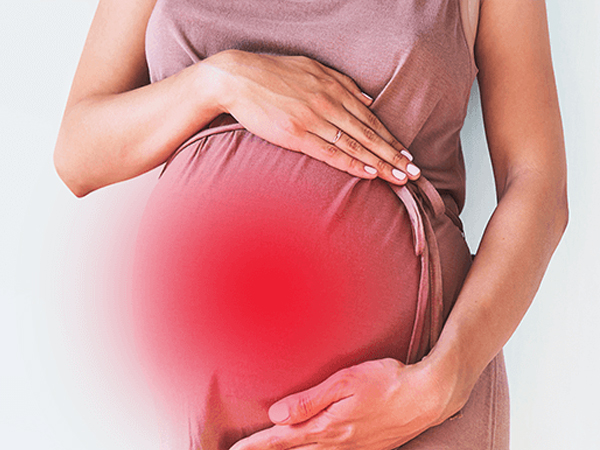
High Risk Pregnancy
- Anemia in Pregnancy
Anemia is the commonest hematological disorder that may occur in pregnancy, the others being rhesus isoimmunization and blood coagulation disorders. in CiDEnCE: a hemoglobin level below 10 g/dl at any time during pregnancy is considered anemia. The HB level at or below 9 g/dl requires detailed investigations and appropriate treatment
Causes During Pregnancy: The woman who has got sufficient iron reserve and is on a balanced diet, is unlikely to develop anemia during pregnancy in spite of the increased demand for iron. But if the iron reserve is inadequate or absent, the factors which lead to the development of anemia during pregnancy are:
- Increased Demands for Iron:the demand for iron during pregnancy is markedly increased.
- Diminished Intake of Iron:Apart from socioeconomic factors, faulty dietetic habits, loss of appetite, and vomiting in pregnancy are responsible factors.
- Diminished Absorption:The acid environment in the duodenum helps iron absorption
- Disturbed Metabolism:
- Pre-Pregnant Health Status:The majority of the women in the tropics actually start pregnancy in a pre-existing anemic state or at least with inadequate iron reserve.
- Excess Demand:(i) Multiple pregnancies increase the iron demand by twofold. (ii) Women with rapidly recurring pregnancies, within 2 years following the last delivery, need more iron to replenish their Deficient Iron Reserve.
- Iron Deficiency Anemia
Clinical Features: The clinical features depend more on the degree of anemia than anything else. However, the following features may develop slowly.
Symptoms: (1) Lassitude and fatigue or weakness may be the earliest manifestations. (2) The other features are anorexia and indigestion; palpitation caused by ectopic beats, dyspnea, giddiness, and swelling of the legs.
Curative Treatment
Anemia is not a disease but a sign of an underlying disorder. Treatment must be preceded by an accurate diagnosis of the cause of anemia and the type of anemia.
General Treatment:
- Diet:A realistic balanced diet rich in proteins, iron, and vitamins is prescribed.
- To improve the appetite and facilitate digestion, a preparation containing acid pepsin may be given thrice daily after meals.
- To eradicate even a minimal septic focus by appropriate antibiotic therapy.
- Effective therapy to cure the disease contributes to the cause of anemia.
Specific Therapy
Iron Therapy: (i) Oral Therapy (ii) Parenteral Therapy
Oral Therapy
Iron is best absorbed in the ferrous form and as such any of the ferrous preparations available either in tablets or capsules may be conveniently prescribed. other, ferrous sulfate is widely used.
Parenteral Therapy:
Intravenous Route: (i) Repeated Injections (ii) Total Dose Infusion (TDI) (iii) Intramuscular Route
Indications of Parenteral Therapy:
- Contraindications of oral therapy as previously mentioned.
- The patient is not cooperative to take oral iron.
- Cases are seen for the first time during the last 8–10 weeks with severe anemia.
Thus, it is most suitable during 30–36 weeks of pregnancy
- Diabetes Mellitus And Pregnancy
DiPSi (Diabetes in Pregnancy Societies of India): Recommends a 1-step procedure with 75 gm oral glucose without regard to the time of the last meal. A venous plasma glucose value at 2 hours more than 140 mg/dl is diagnosed GDM.
Hazards: (1) Increased perinatal loss (2) Increased incidence of macrosomia (3) Polyhydramnios (4) Birth trauma (5) Recurrence of GDM in subsequent pregnancies is about 50%.
Management: A diet of 2,000–2,500 Kcal/day for normal-weight women and a restriction of 1,200–1,800 Kcal/day for an overweight woman is recommended. Carbohydrates should be 40–50% of total calories. Women should perform self-blood glucose monitoring using a reflectance meter. Women with well-controlled GDM have a reduced risk of complications. The control of high blood glucose is done by restriction of diet, and exercise with or without insulin. Human insulin should be started if fasting plasma glucose level exceeds 90 mg/dl and 2 hours postprandial value is greater than 120 mg/dl (repetitive) even on diet control. Nearly 25% of women with GDM need insulin therapy. Exercise (aerobic, brisk walking) programs are safe in pregnancy and may obviate the need for insulin therapy.
- Thyroid Dysfunction and Pregnancy
Hyperthyroidism: Hyperthyroidism occurs in about 2 per 1,000 pregnancies. Autoimmune hyperthyroidism (Graves’ disease) due to thyroid-stimulating antibodies is the commonest cause.
Maternal and Fetal/Neonatal Complications in untreated Hyperthyroidism:
Maternal: Miscarriage, Preterm Delivery, Preeclampsia, Congestive Cardiac Failure, Placental Abruption, Thyroid Storm, and Infection.
Fetal/Neonatal: IUGR, Prematurity, Stillbirth, Hyperthyroidism, Hypothyroidism, Increased Perinatal Morbidity, and Mortality.
Management
The main stay of treatment is use of antithyroid drugs [propylthiouracil (PTU) or Methimazole.
- Hypertensive Disorder of Pregnancy
Hypertension is one of the common medical complications of pregnancy and contributes significantly to maternal and perinatal morbidity and mortality
- Preeclampsia
Definition: Preeclampsia is a multisystem disorder characterized by the development of hypertension to the extent of 140/90 mm Hg or more with proteinuria after the 20th week in a previously normotensive and nonproteinuric woman. The preeclamptic features may appear even before the 20th week as in cases of hydatidiform mole and acute polyhydramnios.
The Term Pregnancy-Induced Hypertension Includes—(i) Gestational Hypertension, (ii) Preeclampsia, and (iii) Eclampsia.
Prophylactic Measures For Prevention of Preeclampsia
- Regular antenatal checks for early detection of rapid gain in weight or a tendency of rising blood pressure, especially the diastolic one.
- Antithrombotic Agents:Low-dose aspirin 60 mg daily beginning early in pregnancy in potentially high-risk patients is given.
- Heparin or low-molecular-weight heparin
- Calcium supplementation (2 g/day) reduces the risk of gestational hypertension
- Antioxidants, vitamins E and C, and nutritional supplementation with magnesium, zinc, fish oil, and a low-salt diet.
- A balanced diet is rich in protein.
Management of Preeclampsia
The treatment is mostly empirical and symptomatic. While measures are directed to relieve edema and hypertension, there is no specific therapy for proteinuria that automatically subsides with the control of hypertension.
Rest and a high-protein diet are advised and the patient is investigated and checked. If the treatment fails to improve the patient is to be admitted. It is essential that she should be warned against ominous symptoms, such as headache, visual disturbances, vomiting, epigastric pain, or scanty urine.
Hospital Management
Rest: Admission to a hospital and rest is helpful for continued evaluation and treatment of the patient. While in bed patient should be in a left-lateral position as much as possible, to lessen the effects of vena caval compression.
Diet: The diet should contain an adequate amount of daily protein (about 100 g). Usual salt intake is permitted. Fluids need not be restricted. Total calories approximately 1,600 cal/day.
Diuretics: The diuretics should not be used injudiciously, as they cause harm
Antihypertensives: Antihypertensive drugs have limited value in controlling blood pressure due to preeclampsia.


